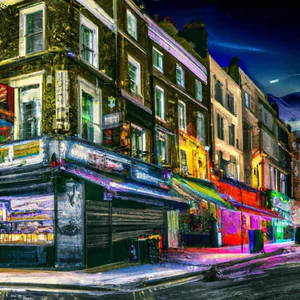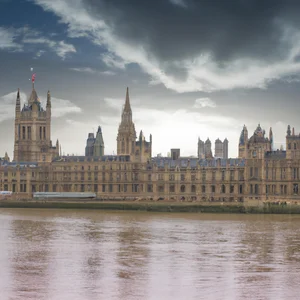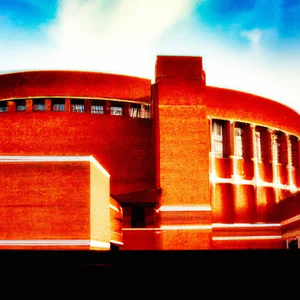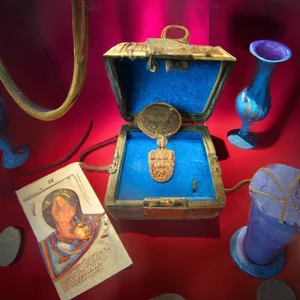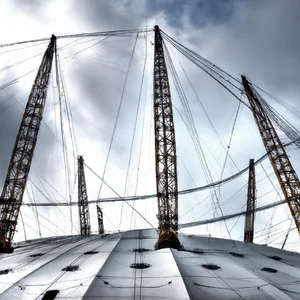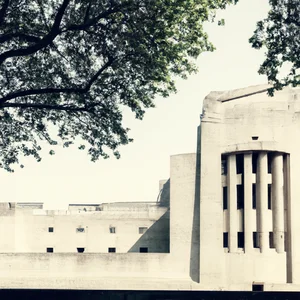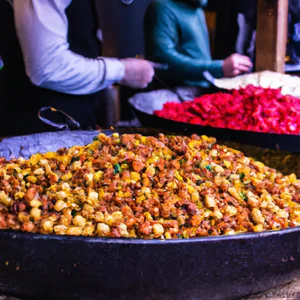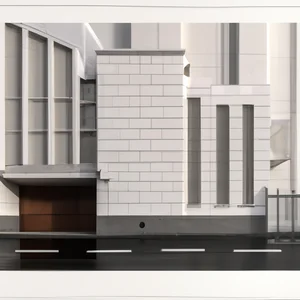Book your experience
Visit the Churchill Tunnels: Explore the secret bunkers of the Second World War
Hey, have you ever thought about checking out the Churchill Tunnels? It’s a truly fascinating place! Imagine this: secret bunkers, a bit like those seen in films, where crazy meetings took place during the Second World War. It’s incredible to think that there, underground, decisions were made that changed the course of history.
When I went there for the first time, I was a little skeptical, but I have to say that I was really impressed. The corridors are narrow and dark, but there is something fascinating in the air, as if the ghosts of the past were speaking to you. And then, there are rooms that look like something out of a spy novel, with maps and tools that were once cutting edge. In short, it’s like taking a dive into the past, and it makes you reflect on how complicated life was in those difficult times.
By the way, while I was wandering around there, I thought it would be interesting to imagine what would happen if someone decided to make a horror movie out of it. The echoing noises, the shadows… well, I don’t know, maybe it’s just my mind racing a little too much. But who doesn’t love a good thrill, right?
In any case, if you like history or simply want to discover something different, I recommend you visit these tunnels. The guide who told us everything was super passionate; it almost seemed like she was reliving those events. Now, that’s the kind of experience that leaves something inside you. I’m not sure, but I think it’s a fantastic way to understand the past a little better.
So, if you get the opportunity, don’t miss it! It’s a trip really worth taking.
Discover the hidden history of the Churchill Tunnels
A journey into the depths of history
I vividly remember the moment I first set foot in the Churchill Tunnels. The cool, humid air enveloped me, and a shiver ran down my spine as the soft lights illuminated the rough stone walls. Every step I took seemed to take me back in time, to an era when the fate of Britain hung by a thread. The tunnels, built in 1938 and used as a headquarters during World War II, tell stories of strategy, courage and resilience.
The details that make the difference
For those who wish to explore these legendary bunkers, the visit is a fascinating journey through history and memory. The tunnels, located beneath Whitehall, are open to the public and offer guided tours that wind through historic rooms and secret corridors. Tours are available seven days a week, but it is advisable to book in advance, especially during high season. You can find up-to-date information on the official Churchill War Rooms website, where you will also find details on tickets and timetables.
An insider tip
A tip that few know: try to visit the tunnels during the morning hours, when natural light filters better into the exhibition areas. Also, if you have the chance, join one of the thematic tours, such as the one dedicated to the stories of the women who worked in the bunkers. These often forgotten narratives offer a deep and personal look at how war affected everyday lives.
The cultural legacy of the tunnels
The Churchill Tunnels are not just a museum; they are a symbol of British resilience. During the war, these spaces hosted crucial meetings and decisions that changed the course of history. Their importance is evident even today, as they represent a place of reflection and learning for future generations, keeping alive the memory of a difficult but formative period.
Sustainability and respect for memory
When visiting the tunnels, it is essential to follow responsible tourism practices. For example, many tours offer eco-friendly options, such as using local guides who know the history and importance of preserving these places well. By choosing tours that promote sustainability, you not only enrich your experience, but also contribute to the protection of cultural heritage.
Soak up the atmosphere
Walking through the tunnels, you can almost feel the tension and anxiety of those distant days. The walls tell stories of strategy and fear, while the sound of my shoes on the stone floor echoed like an echo from the past. Imagine being there, next to Churchill, as he discussed his next moves against the enemy.
A unique experience
If you are a history buff, don’t miss the opportunity to participate in one of the historical reenactments that are periodically held in the tunnels. These immersive experiences will allow you to experience firsthand the tensions and emotions of that historical period.
Myths and truths
A common myth is that the tunnels were just a haven for politicians. In reality, they were an underground city where workers, soldiers and civilians came together to initiate crucial strategies. Life in the tunnels was intense, and the stories of those who spent time there are fascinating and often surprising.
A final reflection
Visit the Churchill Tunnels and ask yourself: What would I have done in a similar situation? How would I deal with fear and uncertainty? These questions may offer you a new perspective on human resilience and the importance of historical memory. History is not just a tale of the past; it is a lesson for the future.
A journey through time: the era of the Second World War
A memory that spans generations
I vividly remember the first time I visited the Churchill Tunnels, guided by a local expert who had dedicated his life to preserving the memory of that crucial period. As we moved through the dark, dank corridors, the sound of our footsteps seemed to echo stories of courage and endurance. The guide told us how these tunnels, a secret network underground, had been the beating heart of British operations during the Second World War. The emotions I felt in that moment were indescribable; I felt as if I had been catapulted back in time, experiencing history first hand.
Practical information
Today, the Churchill Tunnels are one of London’s most fascinating attractions. Located beneath the Palace of Westminster, they are open to the public and offer regular tours. I advise you to book in advance on the official website Churchill War Rooms to avoid long waits, especially on weekends. Guided tours last about an hour and a half, but I recommend you also take the time to visit the adjacent museum, which offers a wide range of historical artifacts.
A unique tip
An insider revealed a surprising trick to me: if you visit the Churchill Tunnels during the week, you have a better chance of going on more intimate tours, with smaller groups of visitors. This allows you to fully immerse yourself in the stories told and ask direct questions to the guide, thus enriching your experience.
Cultural and historical impact
The Churchill Tunnels are not just a testament to military strategies; they also represent the resilience of an entire population. During the war, these underground spaces became a symbol of hope and determination, where British leaders gathered to discuss their next moves. Their historical importance is palpable and continues to influence British culture, making the place a key reference point for understanding the modern history of the United Kingdom.
Sustainability in tours
When visiting the tunnels, consider choosing a tour that promotes sustainable practices. For example, some organizations offer routes that include waste collection along the way, thus contributing to the cleanliness and preservation of the city. Supporting such initiatives not only enriches your experience, but also helps keep historical memory alive.
An enveloping atmosphere
Imagine walking through dark corridors, lit only by dim incandescent lamps, as shadows dance on the damp walls. The scent of history and nostalgia is palpable, and every corner tells a chapter of the fight for freedom. The feeling of being part of that past envelops you completely, making the experience unforgettable.
An activity not to be missed
Don’t miss the opportunity to attend a special event, such as the history story nights occasionally held in the tunnels. These events offer a combination of storytelling and performance, transporting you further back in time as you hear stories that shaped the destiny of Europe.
Myths and misconceptions
A common myth is that the Churchill Tunnels were used exclusively for military operations. In reality, these spaces were a safe haven for many civilians during the bombings, becoming a symbol of unity and hope. Understanding this will help you better appreciate the importance of these tunnels in the daily lives of the British during the war.
Final reflection
As you emerge from the tunnels, I invite you to reflect on how history can be a source of inspiration and teaching. What does resilience in times of crisis mean to you? It can be a way to reconsider your daily life and the challenges you face. History has much to teach us, if only we are willing to listen to it.
Explore the secret chambers of the underground bunkers
A Journey into the Heart of History
I still remember the first time I set foot in Churchill’s underground tunnels. The enveloping dim light and the echo of my footsteps created an almost surreal atmosphere. As I walked along the damp corridors, I seemed to hear the whispers of men and women who, in a time of great uncertainty, gathered here to plan Britain’s future. These bunkers were not just shelters, but real command centers, full of stories and secrets.
Practical and Updated Information
The underground bunkers, located in the heart of London, are now open to the public. Guided tours are available to explore the different levels and secret rooms, from those intended for top secret meetings to those used as staff dormitories. It is advisable to book in advance via the official website Churchill War Rooms to avoid long waits. Don’t forget to wear comfortable shoes: the path can be uneven and the stairs steep.
An Unconventional Advice
An insider revealed to me a trick that few people know: if you’re traveling in a group, ask for a personalized tour. Guides are often more than happy to share exclusive anecdotes and little-known details, making the experience even more engaging. Also, don’t forget to ask about rooms not included in the standard tour—some corners of the bunker remain shrouded in mystery and curiosity can lead to surprising discoveries.
Cultural and Historical Impact
Churchill’s underground bunkers represent a crucial piece of British history, symbolizing a nation’s resilience during the Second World War. Their existence is a tangible reminder of the challenges faced and overcome. Walking within these walls, you feel the legacy of courage and determination that has shaped the United Kingdom.
Sustainability and Responsible Tourism
In an age where sustainability is key, it is important to visit places that promote responsible practices. The Churchill War Rooms have implemented initiatives to reduce environmental impact, such as the use of energy-efficient technologies and the promotion of eco-sustainable materials. Choosing environmentally friendly tours not only enriches your experience, but also contributes to the preservation of these historic spaces.
A Magical Atmosphere
As you explore the bunkers, you will come across rooms decorated with strategic maps and period furnishings, which will transport you to another era. Imagine yourself sitting around a table, while world leaders discuss the fate of the war. The atmosphere is full of history, and every corner tells a story of hope and fear.
Activities to Try
For an authentic experience, take part in one of the historical reenactments held in the bunkers. These events offer the opportunity to interact with costumed actors, experiencing a day in the life of a wartime worker. It’s an engaging way to understand daily life in those turbulent years.
Myths to dispel
A common myth is that the bunkers were just shelters from the bomb. In reality, they were also communication and strategy centers, where military operations were directed. This limited view does not do justice to their historical importance.
Final reflection
After exploring these spaces, I asked myself: how can the history of a place influence our understanding of the present? Churchill’s bunkers are not only a tribute to the past, but invite us to reflect on human resilience and the ability to face adversity. What stories will we take home after walking within their walls?
A unique tip: visit at sunset for a magical atmosphere
I remember my first visit to the Churchill Tunnels, an experience that left me speechless. As the sun began to set, the sky was tinged with shades of gold and orange, creating a fascinating contrast with the cold gray stone walls of the bunkers. At that moment, as I walked through the narrow tunnels, the sound of my footsteps mixed with the silence full of history. The warm light of the sunset filtered through the openings, transforming the tunnels into an almost mystical place, where history seemed to dance among the shadows.
An enchanting atmosphere
Visiting the Churchill Tunnels at sunset is not just a tip, it is an experience that enriches the visit. According to local guides, this is the best time to explore the secret rooms and underground corridors, as the warmth of the sun at nightfall creates a unique atmosphere that highlights every architectural detail and every object on display. The National Churchill Museum suggests booking the sunset tour, not only for the visual beauty, but also for the absence of crowds, allowing you to fully immerse yourself in history.
An insider tip
A little-known tip is to carry a small flashlight with you. Even if the tunnels are well lit, having a personal light source can enrich the experience, allowing you to explore hidden corners and observe details that you might otherwise miss. Local guides love to share fascinating stories about the little secrets and forgotten stories that hide within the walls of these galleries.
The historical and cultural impact
The Churchill Tunnels are not just an architectural marvel; they are a symbol of British resilience during the Second World War. These underground spaces were strategically vital to war operations and hosted some of the most critical moments in modern history. Visiting them at sunset allows you to reflect on the importance of these places and the historical memory they bring with them.
Sustainability in tours
Opting for a sunset tour can also mean a more sustainable approach to tourism. With fewer visitors during the evening hours, the environmental impact is reduced and helps preserve the serenity of the place. Many local tour operators are implementing eco-friendly practices, such as the use of low-emission transportation.
Immersion in the atmosphere
Imagine walking along the corridors, listening to the whisper of the wind making its way through the cracks, as the sun sets on the horizon. The light that filters creates a play of shadows and lights, making the journey through history even more evocative. Each step is a dive into the past, a call to reflect on what was and how that period has shaped today’s world.
An activity worth trying
For an unforgettable experience, I recommend combining your visit to the tunnels with a walk in the surrounding gardens, where the view of London at sunset is simply breathtaking. Bring a small picnic with you and enjoy the moment, reflecting on the history you have just explored.
Myths to dispel
A common misconception is that the Churchill Tunnels are just a tourist attraction with no historical substance. In reality, every corner tells true stories of courage and determination, witnesses of a war that changed the course of history.
A final reflection
The next time you think about visiting the Churchill Tunnels, ask yourself: What story will I take home with me? The beauty of these spaces, especially at sunset, is that they are not just places to see, but experiences to live, which invite you to a profound reflection on what it means to be part of history.
Meeting the memory keepers: stories from local guides
An unforgettable meeting
During one of my explorations of the Churchill tunnels, I came face to face with a fascinating memory keeper: a former soldier who, during the Second World War, had spent hours in the darkness of those underground corridors. With his voice trembling with emotion, he told how every corner of those rooms had a soul, and how memories of fear and hope were intertwined in a single thread of stories. His vibrant narration transformed the visit into an almost magical experience, catapulting me back in time.
Practical information
Tours of the Churchill Tunnels are available daily, with local guides ready to share anecdotes and historical details. It is advisable to book in advance, especially during high season, to secure a place. Various sources, such as the official Churchill War Rooms website, offer up-to-date information on timetables and fares. The visits take place in small groups, allowing for a more intimate and personal interaction with the guides.
Unconventional advice
An insider tip: Ask your guide to share stories of specific events that aren’t included in the standard tour. Often, local guides are in possession of exclusive stories, such as that of a young soldier who fell in love with a London woman during the war and how his love story was intertwined with the historical events of the bunkers. These details make the visit not only educational, but also deeply emotional.
The cultural impact
The importance of local guides does not stop at the simple narration of historical events; they act as custodians of the collective memory of a nation. Their stories not only illuminate the past, but also help new generations understand the value of peace and resilience. Witnessing such tales enriches our understanding of the history of London and the wider world.
Sustainability in tours
Choosing to participate in tours led by local guides promotes more responsible tourism. These professionals often support community initiatives and preserve local culture, reducing the environmental and cultural impact of tourism. Informing yourself and choosing experiences that enhance local heritage is a step towards a more sustainable journey.
A unique atmosphere
Imagine walking along the silent corridors, surrounded by an atmosphere of history and nostalgia. The walls tell stories of courage and determination, while the guides, with their voices full of emotion, transport you back in time. Each word is a thread that weaves an invisible bond with the past, making the experience not only informative, but deeply touching.
Recommended activity
After the tour, don’t miss the opportunity to visit the café located nearby, where you can enjoy a traditional tea accompanied by war-era pastries. This not only enriches the experience, but also offers a moment of reflection on what was learned during the visit.
Exposing the myths
A common misconception is that the Churchill Tunnels are just a labyrinth of dark passages. In reality, these spaces were lively and operational, with rooms designated for strategic meetings and even areas for relaxation. Understanding the true function of these places helps to enhance the historical importance of what you are visiting.
Final reflection
As you leave the Churchill Tunnels, I invite you to reflect on how the stories of those memory keepers can resonate in the present. What lessons can we draw from the experiences of those who have lived through such critical moments in history? The answers are often closer than we think, ready to be discovered in every corner of our daily lives.
The strategic importance of the tunnels for London
An anecdote that tells of London’s resilience
I vividly remember my first visit to the Churchill Tunnels. As I wandered between the concrete walls, I felt a thrill of emotion. An elderly gentleman, a former resident of London during the war, approached us. With a trembling voice and bright eyes, he described how these tunnels were not just shelters, but a symbol of hope and determination. His story made me understand that these spaces, dark and damp, experienced moments of great intensity and contributed to shaping the destiny of the city.
The vital function of tunnels
Built during the Second World War, the Churchill Tunnels played a crucial role in keeping London operational and safe. Used as command centers and refuges for political and military leaders, these underground passages allowed for rapid and strategic communication in a time of crisis. According to Churchill War Rooms, operations conducted from here had a direct impact on Allied strategy, contributing to victory against the Axis forces.
A unique insider tip
If you want a truly out-of-the-ordinary experience, book a guided night tour. Meeting a local guide who tells untold stories while the tunnels are shrouded in darkness creates an almost palpable atmosphere. During one of these visits, tales of strategy and courage come to life, and you’ll feel part of a bigger story.
The cultural impact of tunnels
The Churchill Tunnels are not just a historical monument; they are the symbol of London’s resilience. Their existence has influenced popular culture, inspiring films, books and plays that chronicle the struggle and determination of a people. The stories of those who found refuge there remain alive, conveying a message of unity and hope that still resonates today.
Sustainability and responsible tourism
Visiting the Churchill Tunnels can be done sustainably. Choose tours that promote eco-friendly practices, such as small groups and the use of digital information materials. Some tours also offer the opportunity to contribute to recovery and maintenance projects of historic sites, allowing visitors to leave a positive mark.
Soak up the atmosphere
Imagine walking down the silent corridors, the echo of your footsteps resonating off the stone walls. The soft lights create a play of shadows, and the scent of history fills the air. Every corner tells a story; every crack in the masonry is a sign of the past. This is a place where time seems to have stopped, inviting you to reflect on what was and what could be.
Activities to try
Don’t miss the opportunity to participate in an interactive workshop that simulates a war strategy. You’ll be able to test your leadership and problem-solving skills, just like the leaders of old. It’s an engaging way to connect with the story and understand the challenges faced.
Myths to dispel
A common myth is that the tunnels were designed solely for shelter from bombing. In reality, they were also operational command centers, where military strategies were planned. This aspect is often overlooked, but it is fundamental to understanding their true meaning.
Final reflection
As you leave the tunnels, ask yourself: What stories of resilience and hope can you apply to your daily life? London’s history, held in these underground spaces, is a powerful reminder that even in the darkest moments, the light of determination and determination community can shine brightly. The Churchill Tunnels are not just a chapter from the past, but an invitation to reflect on the challenges of the present and future.
Sustainability in tours: how to choose a responsible experience
A memory that makes the difference
On a visit to the Churchill Tunnels, I came across a local guide, a keen historian called James, who not only told the fascinating history of the bunkers, but also shared his concern for the environment. As he led us through the cold, damp rooms, James emphasized the importance of preserving not only the historical memory of these places, but also the surrounding ecosystem. His passion for sustainability made the experience even more meaningful, making me aware of the connection between past and present.
Practical and up-to-date information
When choosing a Churchill Tunnels tour, it is essential to opt for operators who demonstrate a real commitment to sustainable practices. For example, the Churchill War Rooms, run by the Imperial War Museum, has implemented green measures such as recycling and the use of renewable energy. Always check that the chosen operator has sustainability certifications, such as those issued by Green Tourism. This way, you not only have a historical experience, but also contribute to responsible tourism.
An insider tip
A little-known tip is to consider private or small group tours. Not only do they offer a more intimate and personalized experience, but they also reduce the environmental impact compared to mass tours. Plus, having an expert guide like James, who cares about the ecological impact, can greatly enrich your visit.
The cultural importance of sustainability
The choice of responsible tourism in bunkers is not just a question of ecology; it also represents a way to honor the memory of the people who lived through the Second World War. These rooms have witnessed crucial decisions and human sacrifices, and preserving the integrity of these places is an act of respect. Choosing an eco-conscious tour means helping to keep history alive for future generations.
Sustainable tourism practices
When planning your visit, look for tours that use public transportation or low-emission transportation. Some operators offer packages that include visits to multiple historic sites, optimizing routes and reducing your carbon footprint. Also, consider bringing a reusable bottle and local snacks with you to minimize waste.
Soak up the atmosphere
Imagine descending into the tunnels, the cold, damp walls telling stories of resilience. The soft lighting creates an almost mystical atmosphere, while local guides share fascinating details about daily life in times of war. Every corner resonates with stories of courage, and your awareness of sustainability adds another layer of depth to this experience.
An activity worth trying
For an even more engaging experience, take part in a historical cooking workshop, where you can learn to prepare typical dishes from the war period, using local and sustainable ingredients. This activity not only gives you a taste of the food culture of the time, but also helps you understand the historical context in which these dishes were born.
Myths to dispel
A common myth is that sustainable tours are more expensive. In reality, by choosing local operators and small group tours, you can often find competitive rates that also offer you a richer and more authentic experience. Don’t be fooled by the idea that sustainability is a luxury; it is an option accessible to all.
A final reflection
As you explore the Churchill Tunnels, think about how your visit can contribute to more responsible tourism. What impact do you want to have on the story you are living? Your choice of a sustainable tour not only enriches your experience, but also helps preserve these historic places for future generations. Reflections like this can transform your visit into an act of care and responsibility.
Historical curiosities: the role of women in the bunkers
A tenacious soul at the heart of history
During my visit to the Churchill Tunnels, I found myself walking through corridors that almost seem to whisper forgotten stories. A passionate guide told us the story of a woman, one of many who helped write the pages of the British resistance during the Second World War. Her name was Joan, and as a radio operator, she spent hours in bunkers, communicating with Allied forces and making sure vital messages were transmitted. Her dedication and courage, along with that of many other women, represent a vital chapter in the history of the tunnels, often overlooked in larger narratives.
An invisible but palpable influence
Women were not only present as volunteers, but held crucial roles within the structures, from secretarial work to operational tasks. Over 70% of the workforce in the bunkers were women, demonstrating that their influence was critical to day-to-day functioning and military strategy. This part of history is often forgotten, but by visiting the tunnels you will have the opportunity to discover more about these extraordinary figures through interactive exhibits and stories.
A little-known tip
If you wish to delve deeper into the topic of the role of women during the war, I recommend you take part in one of the themed guided tours offered during the month of March, on the occasion of International Women’s Day. Local guides, often descendants of these heroic women, tell personal stories and offer a unique perspective that enriches the visit.
Cultural heritage
The contribution of women in the bunkers is not only a historical footnote, but has profoundly influenced post-war British culture and the women’s rights movement. Their resilience has paved the way for new opportunities, transforming the perception of women’s role in society. This aspect gives an additional dimension to your experience in the tunnels, making the visit not only informative, but also emotionally engaging.
Sustainability and respect for memory
When visiting the Churchill Tunnels, considering respect for the memory of these women is paramount. Tours are managed with a keen eye on sustainability, and choosing to participate in small-scale tours not only enriches your experience but also helps preserve this historical heritage.
An atmosphere full of emotions
Walking between rooms carefully set up, it is impossible not to feel a shiver down your spine. Imagine the women who moved between these walls, often under pressure and in extreme conditions. The history becomes palpable, and every corner tells a story of courage and determination.
An unmissable activity
Don’t miss the opportunity to visit the temporary exhibition dedicated to women in bunkers, which offers authentic finds and direct testimonies. It is an experience that will enrich your understanding of the war period and allow you to fully appreciate the historical context in which you find yourself.
Myths to dispel
A common misconception is that women were only support figures during the war. In fact, many of them were on the front lines, actively contributing to strategy and communications. This perspective is often ignored in larger narratives, but it is essential to understanding the complexity of war.
A final reflection
As you leave the Churchill Tunnels, ask yourself: What stories of courage and resilience remain unheard in our society today? The story of women in the bunkers is just one of many narratives that deserve to be explored and celebrated. Your visit could be the beginning of a deeper journey into the incredible history of those who fought for freedom and justice.
Interactive activities: live the bunker experience
An immersion in history
When I visited the Churchill Tunnels, one of the aspects that impressed me most was the opportunity to participate in various interactive activities. We are not talking about a simple guided tour, but about experiences that allow you to experience history first hand. For example, I had the chance to try a simulation of a war briefing, where they explained to us how the leaders of the time planned their strategies. It was an intense experience, which really makes you feel the weight of the decisions that were made in those critical moments.
Practical information
If you’re thinking of visiting the tunnels, I recommend checking out the official Churchill War Rooms website, where you can book your ticket in advance and discover the various interactive activities available. The property also offers workshops for children and families, making it a great choice for a group visit. Remember to bring a light jacket: the tunnels tend to be cool and humid, and a little comfort is always welcome to enjoy the experience to the fullest.
An insider tip
Here’s a little-known tip: try to take part in one of the historical reconstructions that are organized throughout the year. These activities are conducted by costumed actors who portray historical figures and recreate scenes from daily life in the bunkers. It’s an amazing way to see how people lived during that time, and the atmosphere it creates is truly magical.
The cultural impact
The interactive activities in the tunnels not only make the visit more engaging, but also help preserve the historical memory of an era that profoundly affected London and the entire world. Each experience offers a glimpse of life that allows us to understand the emotions and challenges of those who lived in those difficult years. It’s not just time travel; it is an opportunity to reflect on human resilience.
Sustainability and responsibility
Another important aspect is that many of the activities offered are designed to be sustainable. The organizers encourage responsible and environmentally friendly practices, such as recycling and the use of eco-friendly materials. This is a good reminder that cultural tourism can also have a positive impact.
Soak up the atmosphere
Imagine finding yourself in a dark corridor, lit only by torches, listening to the sounds of a world that once was. The walls, impregnated with stories, seem to whisper the secrets of the past. This is what makes the Churchill Tunnels so special: every corner, every room, tells a story, and you are there, in the middle of it.
Try an unmissable activity
I advise you not to miss the opportunity to try the activity of writing secret messages with invisible ink, a fun way to immerse yourself in the espionage climate of the period. You will also be able to take home a piece of history by writing your message and making it “disappear” before your eyes.
Let’s dispel a myth
A common misconception is that the Churchill Tunnels are simply a static museum. In fact, their interactive and engaging nature offers a dynamic and lively look at history. They’re not just cold, empty rooms; they are spaces where life pulsated and where the most important decisions were discussed and made.
A final reflection
After exploring the tunnels and participating in the interactive activities, I asked myself: what stories of resilience and courage do we carry with us into life today? Visiting the Churchill Tunnels is more than just a tourist experience; it’s an opportunity to reflect on how the past continues to influence our present. And you, are you ready to discover your connection to history?
Flavors of war: taste traditional dishes from the war period
A taste of history
I still remember the first time I set foot in a small café in London, not far from the famous Churchill Tunnels. The atmosphere was steeped in history; the walls were adorned with black and white photos depicting life during the Second World War. But what struck my palate the most was a traditional dish: the “Woolton Pie”. A simple but delicious vegetable stew, made with seasonal ingredients and served in a golden crust. This dish, invented during rationing, represented not only culinary creativity in difficult times, but also the resilience and community spirit of the English.
Discover war dishes
London offers a variety of culinary experiences related to this historical period. Places like the “Churchill War Rooms Café” not only serve dishes typical of the era, but do so in a context that takes visitors back in time. You can enjoy the “Spam Fritter,” a fried corned beef, or the “Ration Book Cake,” a dessert made with limited ingredients, all dishes that tell a story of adaptation and ingenuity. According to the official Churchill War Rooms website, these recipes not only reflect the era, but are also prepared with fresh, local ingredients, thus supporting local agriculture.
A unique tip
A tip that few know is to participate in a historical cooking workshop, where you will have the opportunity to learn how to prepare these traditional dishes. These events are often led by local chefs who share fascinating stories about the dishes and their cultural significance. Not only is it a fun way to connect with the story, but also to bring a piece of it home.
The cultural impact
Cooking during World War II was not just about nourishment, but a symbol of resistance and unity. The English adapted to extreme living conditions, and the resulting dishes bear witness to an era of great difficulty. Today, savoring these traditional dishes is a way to honor those experiences and keep the collective memory alive.
Sustainability and responsibility
When you choose to enjoy these historic dishes, consider the importance of doing so in restaurants that use local, sustainable ingredients. Many venues in London are committed to reducing their environmental impact, offering menus that celebrate British cuisine and its agricultural heritage.
Soak up the atmosphere
Imagine sitting at a table, surrounded by stories of courage and determination, while enjoying a “Ration Book Cake” accompanied by a cup of tea. Each bite will bring you closer to a deeper understanding of what it means to live in a time of war. The fragrance of the food, combined with the echo of the history that surrounds you, creates a unique sensory experience.
Activities to try
I recommend you visit the Borough market, where you will find stalls offering fresh products and historic specialities. Some vendors offer war-inspired recipes, allowing you to take home a piece of gastronomic history.
Myths to dispel
A common misconception is that wartime cuisine was dull and flavorless. In fact, chefs of that time were masters in the art of combining limited ingredients to create delicious and nutritious dishes. Culinary creativity emerged even in the most adverse circumstances.
A personal reflection
Next time you are in London, I invite you to consider not only the historic monuments, but also the flavors that tell stories of resilience. Which historical dish would you like to taste to connect with the past?

 Architecture and Design
Architecture and Design Cities and Regions
Cities and Regions Culture and History
Culture and History Events and Festivals
Events and Festivals Fashion and Shopping
Fashion and Shopping Food and Wine
Food and Wine Nature and Adventure
Nature and Adventure Unique Experiences
Unique Experiences


















